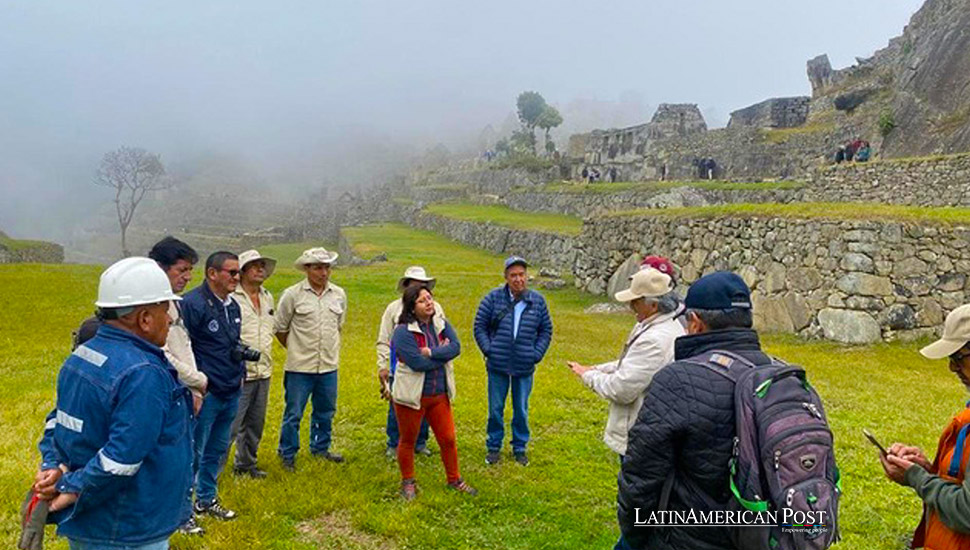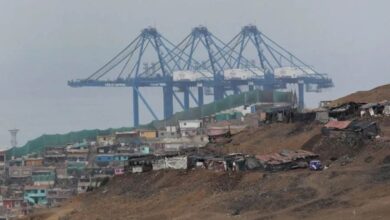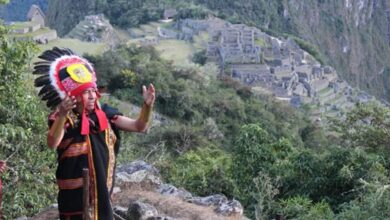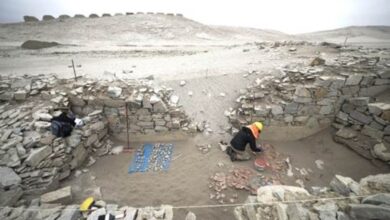Peruvian Machu Picchu’s Archaeological Revival

After an eight-year hiatus, Peruvian archaeologists have resumed investigations at Machu Picchu to assess the conservation status of this iconic Inca monument. The project aims to uncover new insights into the site’s historical significance and preservation needs.
In August 2024, a team of Peruvian archaeologists led by Régulo Franco began a new research phase at Machu Picchu, marking the first such effort since 2016. The project, backed by the Ministry of Culture, is part of the broader “Archaeological and Interdisciplinary Research Program for Conservation and Valorization at the Machu Picchu Historical Sanctuary 2019-2024.” This initiative encompasses 19 archaeological sites, explicitly focusing on Machu Picchu’s Sector III, including the central and sunken plaza within the urban area.
The renewed focus on Machu Picchu is driven by the need to assess the current state of the site’s structures and cultural materials, which have endured centuries of exposure to the elements and the impact of millions of visitors. With an investment of approximately 100,000 soles (about $26,700), the project is set to last three months. Crucially, the work will be conducted in a manner that does not disrupt the ongoing flow of tourists, ensuring that the public can continue to visit the site while research is underway.
This effort is particularly significant given Machu Picchu’s status as one of the world’s most important cultural and historical landmarks. The new research is expected to provide valuable data on the construction techniques used by the Incas and the current condition of the site’s architecture, contributing to ongoing conservation efforts.
A Legacy of Discovery and Preservation
Machu Picchu has long been a focal point of archaeological interest since its “rediscovery” by American explorer Hiram Bingham in 1911. While local Indigenous people were always aware of the site, Bingham’s expedition brought Machu Picchu to international attention, sparking a century of archaeological exploration and study. Over the years, researchers have uncovered a wealth of information about the site’s construction, purpose, and the daily lives of its inhabitants.
Throughout the 20th century, several vital archaeological projects at Machu Picchu have contributed to our understanding of Inca society. In the 1940s, Peruvian archaeologist Luis E. Valcárcel led excavations and studies of the site, revealing significant insights into Inca engineering and urban planning. His work was instrumental in establishing Machu Picchu’s importance as a cultural and historical monument.
In the 1980s and 1990s, a new generation of archaeologists carried out further excavations and studies, who focused on preserving the site amid growing concerns about its vulnerability to environmental and human-induced damage. These efforts culminated in Machu Picchu being designated a UNESCO World Heritage Site in 1983, a status that has helped to protect it from uncontrolled development and exploitation.
The current project builds on this rich legacy of discovery and preservation. It aims to investigate Machu Picchu’s physical state and ensure that future generations can continue to learn from and appreciate this remarkable testament to Inca civilization.
The Importance of Conservation and Authenticity
The renewed archaeological efforts at Machu Picchu underscore the ongoing challenge of balancing conservation with the site’s status as a major tourist destination. Each year, millions of visitors flock to Machu Picchu, drawn by its breathtaking views and the mystique of the Inca Empire. However, this influx of tourists has raised concerns about the site’s long-term preservation.
The project’s emphasis on conservation and authenticity is crucial in this context. The Ministry of Culture, through the Dirección Desconcentrada de Cultura de Cuzco, is overseeing the work in collaboration with the Dirección del Parque Arqueológico Nacional de Machupicchu and other relevant bodies. Their goal is to ensure that all interventions at the site adhere to strict guidelines designed to protect its historical integrity.
One of the critical challenges facing the team is maintaining the authenticity of Machu Picchu’s structures while addressing any deterioration that has occurred over time. This involves using materials and techniques as close as possible to those initially employed by the Incas. By doing so, the researchers aim to preserve the site’s cultural significance and ensure that it remains a genuine representation of Inca heritage.
The project also highlights the importance of continuously monitoring and maintaining the site. Regular assessments of the condition of Machu Picchu’s buildings and landscapes are essential to preventing further damage and to planning effective conservation strategies.
Machu Picchu’s Global Significance and Future Prospects
Machu Picchu is a symbol of Peru’s rich cultural history and a site of global significance. Its designation as a UNESCO World Heritage Site reflects its universal value as a masterpiece of human creative genius and an outstanding example of a traditional human settlement. Therefore, the ongoing research and conservation work at Machu Picchu are of interest not only to Peruvians but also to people around the world.
The current archaeological project represents a continuation of the efforts to understand and protect Machu Picchu for future generations. By investigating the construction processes, the functions of various spaces within the site, and the state of conservation of recovered materials, the researchers contribute to a deeper understanding of Inca culture and its achievements.
Looking ahead, the outcomes of this research could inform broader efforts to preserve and interpret other Inca sites across the Andean region. The lessons learned at Machu Picchu could be applied to similar archaeological projects, helping to protect and conserve the cultural heritage of the entire region.
Moreover, the project’s findings could enhance the experience of visitors to Machu Picchu by providing new insights into its history and significance. By sharing these discoveries with the public, the researchers can help to foster a greater appreciation for the site’s cultural value and the importance of preserving it.
Also read:Peru Acquires Advanced Drones for Enhanced Military Intelligence
The resumption of archaeological work at Machu Picchu marks an important milestone in the ongoing effort to protect and understand this iconic site. By building on the work of previous generations of archaeologists, the current project aims to ensure that Machu Picchu remains a source of knowledge and inspiration for years to come. As the world watches, the archaeologists at Machu Picchu continue to unveil the secrets of this ancient city, preserving its legacy for future generations.





